The hard disk drive is usually largest data storage device in a computer. It is constructed of a stack of metal disks, sometimes called platters, that have a magnetic surface upon which data can be stored and retrieved. Tracks are concentric bands run out from the center of the disk are organized by radial divisions, called sectors, shaped like pie slices. Areas of the surface of a disk are defined by the track and sector.
As the disk platters spin under the drives read/write head, an electromagnet would turn on and off to magnetize spots on the disc's surface in a direction that indicates the value of the stored bit.
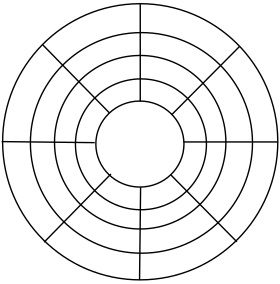
The same number of bits is recorded in each sector. Since the inner sectors have shorter tracks, this means the innermost sectors are more densely packed with data than the bigger outer sectors. The innermost sectors were packed as densely with data as technology would allow, and since each sector had to have the same amount of data, space in the bigger outer sectors was wasted.
Zoned Bit Recording (ZBR)
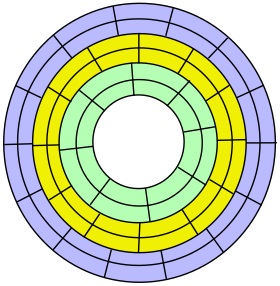
To optimize utilization of platter space, ZBR divides it into different zones based on the track's distance from the center. Because the outer tracks are bigger, they are divided into more sectors than the inner tracks. This allows the entire surface of the disc to be packed closer to the capability of the technology.
Perpendicular Magnetic Recording (PMR)

With longitudinal recording, as the disk spun under the read/write head, an electromagnet would turn on and off to magnetize the disc's surface so their magnetic fields would all line up in the direction the disc was turning. To create different bits, the magnet would reverse its polarity.
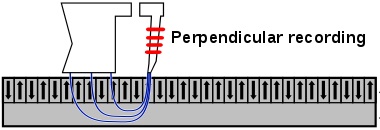
Instead of the fields lying down in the direction the disc was turning, with PMR the write head plunged the magnetic recording field deep into the disc to create fields that are vertical allowing higher data density.
Shingled Memory Recording (SMR)
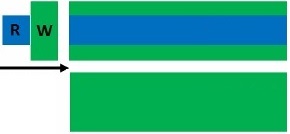
A conventional hard drive has two heads, one for writing and one for reading. The write head is larger than the read head. This means that the tracks on a hard drive platter have to be wider than necessary for reading. There is also a guard space between tracks so that the write head doesn't disturb data on neighboring tracks.
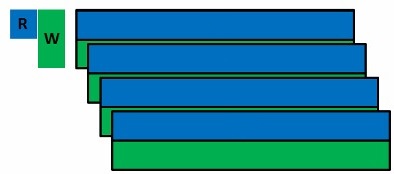
With SMR the tracks are overlapped. The write head records data across the entire track, but the drive "trims" the data to the width that the smaller read head actually needs to read the data. Because there is no guard space between tracks the number of bits is be increased, giving more drive capacity.
Bit Patterned Media (BPM)
In existing hard disk drives, data is stored in a thin magnetic film. The superparamagnetic limit is the minimum size of a magnetized area to prevent the magnetized state from becoming thermally unstable and unable to store bits. With BPM, using nanolithography, the magnetic material is patterned into magnetic islands.
In the manufacture of the disc, hydrogen silsesquioxane one of the leading resists for high resolution electron beam lithography, is used to create tiny pillars of material on the surface. In a process called "sputtering", the disk is put in a vacuum chamber with a cloud of magnetic material. The particles settle on the tips of the pillars, turning them into individual magnetic bits, dense enough to accept a strong magnetic recording and separated far enough to escape the superparamagnetic limit.
More Computer Architecture Articles:
• CPU Process Memory Address Binding
• Intel Celeron D Processor
• The Many Processes of Silicon Wafer Manufacturing
• Processor Interrupts
• Arduino Microcontroller Development Platform
• Basic Decoder Circuitry
• Digital Logic Levels and Transfer Characteristics
• Operating System Memory Paging
• How Computer Chips are Made
• Intel's Core i7 Processors

